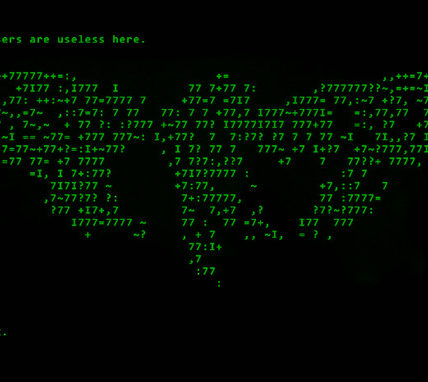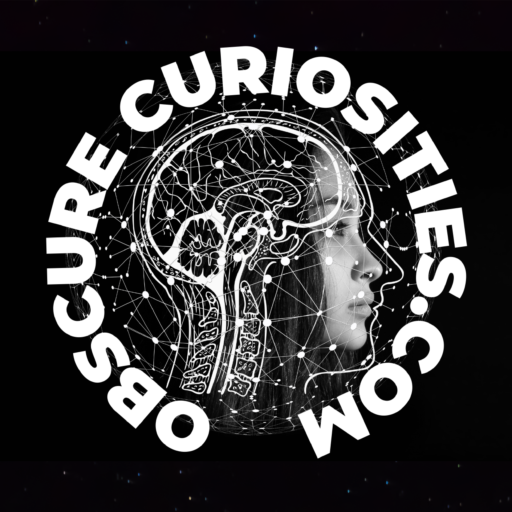The magical world of Sailor Moon, created by Naoko Takeuchi, has captured the hearts of audiences around the globe since its debut in the early 1990s. This iconic series, known for its compelling characters, intricate storyline, and rich cultural references, originally aired in Japan before being adapted for American audiences. While the essence of the story remained intact, one significant alteration occurred during this adaptation: the renaming of the main characters.
In Japan, names carry profound meanings and cultural significance, often reflecting a character’s personality, role, or the thematic elements of the story. However, when Sailor Moon was brought to the United States, many character names were changed to make them more accessible to Western viewers. For example, Usagi Tsukino became Serena Tsukino, Ami Mizuno transformed into Amy Anderson, Rei Hino was renamed Raye Hino, and more. These changes, while seemingly minor, had far-reaching effects on how the characters were perceived and understood by the American audience.
This essay explores how the renaming of characters in the American dub of Sailor Moon impacts the perception and understanding of the characters, their cultural context, and the overall narrative. By delving into the cultural significance of the original names, the rationale behind the changes, and the broader implications for the story, we aim to uncover the depth and nuance that can be lost in translation.
Background of Sailor Moon
Sailor Moon, originally known as “Bishoujo Senshi Sailor Moon” in Japan, is a groundbreaking manga and anime series created by Naoko Takeuchi. First serialized in Nakayoshi magazine in 1991, the manga quickly gained popularity, leading to an anime adaptation produced by Toei Animation in 1992. The series follows the adventures of a teenage girl named Usagi Tsukino, who transforms into the titular Sailor Moon, a magical warrior destined to protect the Earth from various threats.
Takeuchi’s creation was revolutionary for its time, blending the magical girl genre with elements of action, romance, and science fiction. Sailor Moon’s success extended beyond Japan, becoming a global phenomenon that influenced countless other works in the genre. The characters, with their unique powers and personalities, became beloved icons, each embodying different aspects of the story’s themes of love, friendship, and justice.
Introduction to the American Dub
As Sailor Moon’s popularity soared, it caught the attention of international markets, including the United States. In the mid-1990s, DiC Entertainment acquired the rights to produce an English-language version of the anime, aiming to introduce the series to a new audience. This adaptation involved several changes to make the show more palatable to Western viewers, including altering character names, editing certain scenes for content, and modifying dialogue.
The American dub was met with both enthusiasm and criticism. While it successfully brought Sailor Moon to a broader audience, the changes made for localization sparked debates among fans about the preservation of the original’s cultural integrity. The decision to rename characters was particularly contentious. That’s because it altered the perception of the characters and stripped away some of the cultural and thematic nuances embedded in their original Japanese names.
Understanding the origin and creation of Sailor Moon, as well as the context of its American adaptation, is crucial for appreciating the impact of these name changes. This background sets the stage for a deeper exploration of how renaming characters affected the series’ reception and interpretation in the U.S. and highlights the importance of cultural elements in storytelling.
Cultural Significance of Original Names
In Japan, names often carry deep cultural significance, with meanings that reflect the personality, traits, or roles of characters within a story. In Sailor Moon, Naoko Takeuchi carefully chose names that resonate with the characters’ identities and thematic elements of the series.
Usagi Tsukino: The protagonist’s name, “Usagi,” means “rabbit” in Japanese, a reference to the Japanese folklore of a rabbit living on the moon. This ties directly to her role as Sailor Moon, the guardian of love and justice associated with the moon. “Tsukino” means “of the moon,” reinforcing her celestial connection and destiny.
Ami Mizuno: “Ami” can be interpreted as “friend” in Japanese, which suits her kind and intelligent nature. “Mizuno” means “of water,” aligning with her identity as Sailor Mercury, who possesses water-based powers. This elemental connection is vital in understanding her character’s role and abilities.
Rei Hino: “Rei” can mean “spirit” or “soul,” reflecting her spiritual and strong-willed nature as a shrine maiden. “Hino” means “of fire,” which is appropriate for Sailor Mars, who wields fire-based powers. The name underscores her fiery personality and spiritual duties.
Minako Aino: “Minako” means “beautiful child,” fitting for Sailor Venus, the soldier of love and beauty. “Aino” translates to “of love,” highlighting her role as the embodiment of love and attraction.
Makoto Kino: “Makoto” means “sincerity” or “truth,” capturing her straightforward and earnest personality. “Kino” means “of trees,” symbolizing her connection to nature and her strength as Sailor Jupiter, who controls both thunder and plants.
These names do more than identify the characters; they imbue them with cultural and thematic significance that enhances their roles within the story.
Importance in Character Development
The original Japanese names of the Sailor Moon characters are far from arbitrary. They’re integral pieces to understanding their personalities, powers, and the thematic elements they represent.
- Usagi Tsukino’s name reinforces her whimsical, somewhat clumsy personality, and her connection to the moon’s mythology, making her transformation into Sailor Moon feel like a natural extension of her identity.
- Ami Mizuno’s name reflects her intelligence and gentle nature, with the water element symbolizing her adaptability and calm demeanor. It makes her analytical approach to problems more coherent with her character.
- Rei Hino’s name emphasizes her fiery temperament and spiritual depth, which are key aspects of her character both in her civilian life and as Sailor Mars.
- Minako Aino’s name highlights her role as the leader of the Sailor Soldiers before Usagi’s awakening, with love and beauty being central themes in her character arc.
- Makoto Kino’s name captures her duality as both a powerful warrior and a nurturing friend, grounded by her connection to nature.
In the original Japanese context, these names provide an immediate, intuitive understanding of the characters. They enhance the storytelling by embedding additional layers of meaning and cultural resonance. But, these are lost in translation when the names are changed for different audiences.
Name Changes in the American Dub
When Sailor Moon was adapted for American audiences, the character names underwent significant changes. Here is a list of some of the major characters and their name transformations:
Usagi Tsukino became Serena Tsukino
Ami Mizuno became Amy Anderson
Rei Hino became Raye Hino
Minako Aino became Mina Aino
Makoto Kino became Lita Kino
Mamoru Chiba became Darien Shields
These changes were part of a broader effort to make the series more accessible and relatable to a Western audience, simplifying names to be more familiar and easier to pronounce.
Reasons for the Name Changes
The decision to rename characters in the American dub of Sailor Moon was driven by several factors:
Cultural Adaptation: The names were changed to make the characters feel more familiar to American children, who might find Japanese names difficult to pronounce or remember. By using Western names, the localization team aimed to create a sense of relatability and ease of understanding.
Marketing and Commercial Considerations: Western names were seen as more marketable and could help in selling related merchandise, such as toys, books, and apparel, in the U.S. market. Familiar names were thought to appeal more to the target demographic.
Simplification for Younger Audiences: The localization team assumed that simpler names would be easier for the younger audience to follow and connect with, ensuring that the show remained accessible and enjoyable for its intended viewers.
Cultural Sensitivity and Neutrality: There was an effort to avoid any potential cultural insensitivity or misunderstanding that might arise from the use of foreign names and references. By choosing neutral Western names, the aim was to avoid any misinterpretation or negative connotations that might be associated with unfamiliar names.
While these reasons were practical from a localization and marketing perspective, they also had significant implications for the perception and understanding of the characters and the overall narrative.
Impact on Character Perception
The renaming of characters in the American dub led to a notable shift in how these characters were perceived by the audience. The original Japanese names carried specific meanings and cultural references that enriched the characters’ identities and roles within the story. These nuances were lost in translation, making the characters’ backgrounds and attributes less apparent to the American audience.
The American names, while more familiar, lacked the deeper cultural significance of the original names. This made the characters seem more generic and less tied to the rich cultural context that Naoko Takeuchi originally envisioned.
Overall, while the name changes in the American dub of Sailor Moon aimed to make the series more accessible, they also resulted in a loss of cultural depth and thematic richness, altering the way the characters were perceived and understood by the audience. This trade-off between accessibility and authenticity highlights the challenges of adapting culturally rich content for different audiences.
Broader Implications for the Sailor Moon Dub VS the Original Anime
The changes in character names in the American dub of Sailor Moon had broader implications for the narrative’s consistency and coherence. The original Japanese names weren’t just labels, but integral components of the characters’ identities, powers, and roles within the story.
In the original Japanese version, names like Usagi Tsukino (“Rabbit of the Moon”) and Rei Hino (“Spirit of Fire”) were carefully chosen to reflect the characters’ thematic connections to the moon and fire, respectively. These names provided immediate context and depth, helping viewers to quickly grasp the characters’ identities and powers.
The most egregious example is the name “Usagi,” which is directly tied the character to Japanese folklore about the rabbit on the moon, reinforcing her role as Sailor Moon. This cultural reference was entirely lost with the name “Serena,” weakening the thematic ties and making her transformation seem less meaningful.
Also, the elemental connections in some of the original names were vital for understanding the characters’ powers. “Ami Mizuno” (“of Water”) directly indicated Sailor Mercury’s water-based abilities, while “Makoto Kino” (“of Trees”) hinted at Sailor Jupiter’s control over nature and lightning. In the American dub, names like “Amy Anderson” and “Lita Kino” do not convey these elemental associations, making the characters’ powers appear more arbitrary and less integrated into the narrative.
The original Japanese names provided a cultural context that enriched the story. By changing these names, the American dub stripped away layers of meaning, making the characters appear more generic and less tied to their cultural origins. This loss of cultural context also impacted the storyline, as certain plot elements and character interactions were deeply rooted in the characters’ names and the cultural connotations they carried.
Reception and Criticism
The reception of the name changes in the American dub of Sailor Moon was mixed, with fans and critics expressing both support and criticism. Many fans of the original Japanese version were critical of the name changes, arguing that they diluted the characters’ identities and stripped away the cultural depth that made the series unique. The loss of meaningful names was seen as a form of cultural erasure, reducing the authenticity of the story.
On the other hand, some American viewers appreciated the changes, finding the Western names easier to relate to and pronounce. For these viewers, the name changes helped make the series more accessible and enjoyable.
Meanwhile, critics noted that while the American dub succeeded in bringing Sailor Moon to a wider audience, it also compromised the series’ cultural integrity. Reviews often highlighted the loss of thematic and cultural nuances as a significant drawback of the adaptation. Despite these criticisms, the American dub achieved commercial success, demonstrating the trade-off between preserving original elements and making the series marketable to a new audience.
The long-term effects of the name changes are evident in the enduring popularity of Sailor Moon. While the American dub introduced many viewers to the series, the original Japanese version remains highly regarded for its cultural richness and thematic depth. The name changes have also sparked discussions about the importance of cultural preservation in media adaptations, influencing how future anime and other foreign media are localized for different audiences. Notably, the 21st century show Sailor Moon Crystal in its English dub uses the original Japanese names, something many old-school fans were excited about.
Case Studies of Character Names in the Japanese VS American Series
To fully understand the impact of the name changes in the American dub of Sailor Moon, let’s examine specific cases in detail. This will highlight the extent to which these alterations influenced character perception and narrative coherence.
Usagi Tsukino / Serena Tsukino
Meaning: “Usagi” means “rabbit” and “Tsukino” means “of the moon,” directly referencing the Japanese folklore of the rabbit on the moon and establishing her strong connection to the celestial body.
Cultural and Thematic Significance: Usagi’s name ties her to the moon both culturally and thematically, reinforcing her role as Sailor Moon and the story’s broader lunar motifs.
Dub Name (Serena Tsukino)
Impact: The name “Serena” evokes serenity and calmness but lacks the cultural context and thematic depth of “Usagi.”
Perception Shift: American audiences perceive Serena as more of a typical Western teenage girl, with the loss of the rabbit and moon folklore connection. This diminishes the immediate understanding of her unique role and destiny.
Ami Mizuno / Amy Anderson
Meaning: “Ami” can mean “friend,” and “Mizuno” means “of water,” indicating her compassionate nature and water-based powers as Sailor Mercury.
Elemental and Character Significance: Her name ties her directly to her elemental power, helping viewers understand her abilities and personality.
Dub Name (Amy Anderson)
Impact: “Amy Anderson” is a common Western name with no inherent link to water or friendship.
Perception Shift: This change makes her character’s elemental powers seem less integral to her identity and more arbitrary. The immediate cultural and elemental connections are lost, affecting how her role as Sailor Mercury is perceived.
Rei Hino / Raye Hino
Meaning: “Rei” can mean “spirit” or “soul,” and “Hino” means “of fire,” reflecting her role as a spiritual shrine maiden and her fire-based powers as Sailor Mars.
Spiritual and Elemental Significance: Her name is a direct indicator of her powers and spiritual duties, providing a clear understanding of her character.
Dub Name (Raye Hino)
Impact: The name “Raye” retains the phonetic sound but loses the specific meanings related to spirit and fire.
Perception Shift: While still somewhat familiar, the name “Raye” does not convey the same depth of character, making her spiritual and elemental aspects less pronounced and more generic.
Minako Aino / Mina Aino
Meaning: “Minako” means “beautiful child,” and “Aino” means “of love,” highlighting her role as Sailor Venus, the soldier of love and beauty.
Character and Role Significance: Her name directly reflects her role as the embodiment of love and beauty, which is central to her character’s identity.
Dub Name (Mina Aino)
Impact: The name “Mina” shortens her original name, making it simpler but losing the poetic quality and deeper meaning.
Perception Shift: This change makes her seem less tied to the themes of love and beauty, reducing the immediate understanding of her significance as Sailor Venus.
Makoto Kino / Lita Kino
Meaning: “Makoto” means “sincerity” or “truth,” and “Kino” means “of trees,” aligning with her straightforward personality and powers related to nature and thunder.
Elemental and Character Significance: Her name captures her duality as both a strong warrior and a nurturing friend, grounded by her connection to nature.
Dub Name (Lita Kino)
Impact: The name “Lita” has no inherent connection to sincerity, truth, or nature.
Perception Shift: This makes her character’s powers and personality seem less integrated and coherent, losing the immediate association with her elemental and personal traits.
Mamoru Chiba / Darien Shields
Meaning: “Mamoru” means “to protect,” and “Chiba” means “thousand leaves,” symbolizing his role as a protector and his connection to the Earth.
Role and Character Significance: His name directly indicates his protective nature as Tuxedo Mask and his Earth-based powers.
Dub Name (Darien Shields)
Impact: While “Shields” suggests protection, “Darien” has no specific cultural or thematic significance.
Perception Shift: This change makes his role as a protector less explicit and reduces the immediate cultural connection, making his character seem more generic.
Examining these specific cases highlights how the name changes in the American dub of Sailor Moon affected the perception and understanding of the characters. This trade-off between accessibility and authenticity remains a point of contention and a lesson in the complexities of cultural adaptation in media.
Closing Thoughts
With its name changes and localization efforts, the American adaptation of Sailor Moon successfully introduced a beloved Japanese series to a broader audience. However, these changes came with significant trade-offs. The original Japanese names of the characters carried deep cultural, thematic, and elemental significance that enriched the story and provided immediate context to the characters’ identities and roles.
The loss of meaningful names diluted the thematic connections and elemental associations that were integral to understanding the characters and their powers. This not only altered the perception of individual characters but also impacted the overall narrative, making it less rich and less culturally resonant. While the Western names made the series more accessible and marketable to American audiences, they also made the characters seem more generic and less tied to their original cultural contexts.
Ultimately, the name changes in the American dub of Sailor Moon highlight the challenges and complexities of adapting culturally rich content for different audiences. While localization may be necessary to make content accessible and relatable, it’s also important to preserve the original elements that give the story its depth and authenticity. As we continue to enjoy global media, these lessons remind us of the value of cultural preservation and the importance of respecting the original context and meaning embedded in names and other cultural elements.
By understanding and appreciating both versions of Sailor Moon, we can gain a fuller, more nuanced perspective of this iconic series. The original Japanese names are a key part of the cultural richness that makes the series a timeless and universal story.
~ Amelia Desertsong









RECENT COMMENTS